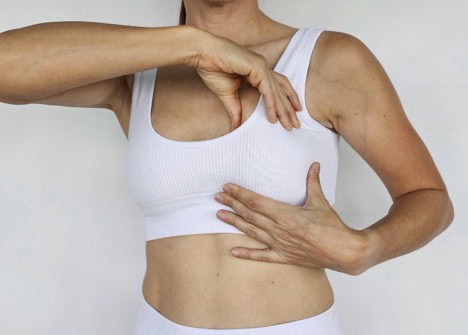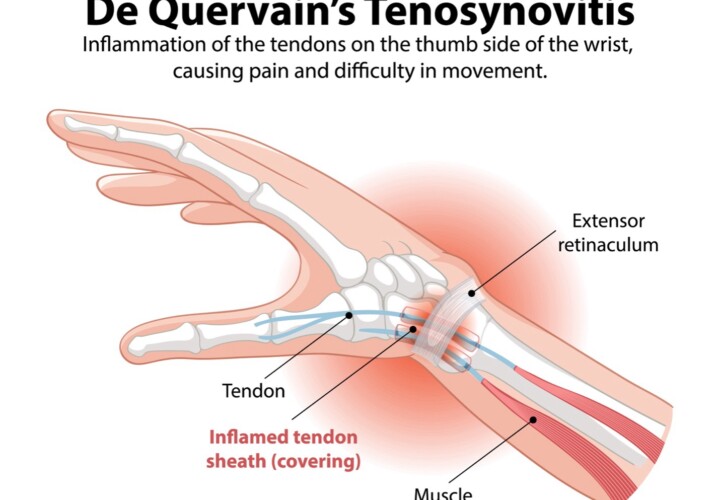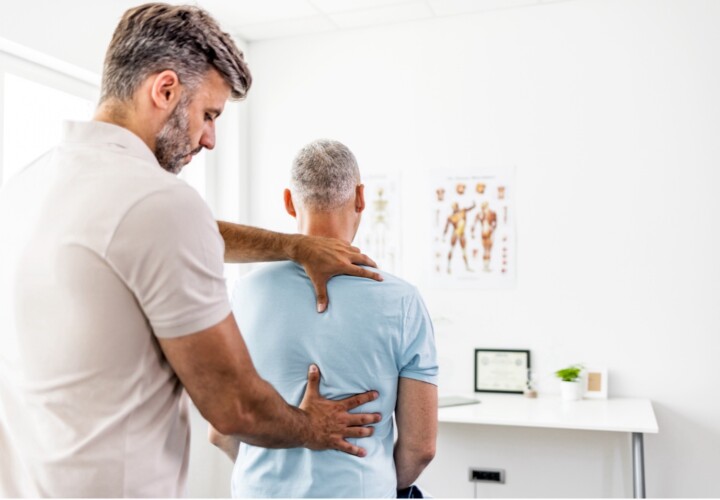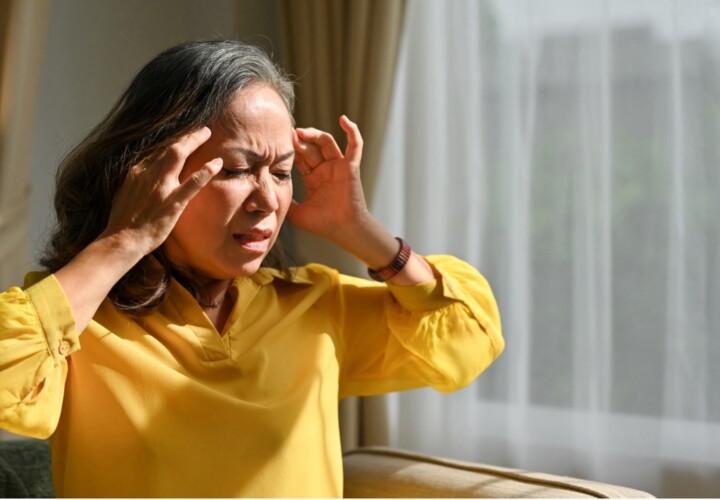Post-mastectomy lymphedema is a condition that can develop after breast cancer surgery, particularly in cases where lymph nodes are removed or treated with radiation. This condition occurs due to an accumulation of lymph fluid in the tissues, leading to swelling, most commonly in the arm, hand, or chest on the side of the surgery. Understanding the risk, recognizing early symptoms, and exploring effective treatment options are vital for managing lymphedema and improving quality of life.
Causes and Risk Factors
Lymphedema develops when the lymphatic system is compromised or damaged. Following a mastectomy, this can happen due to:
- Lymph Node Removal: Axillary lymph node dissection increases the likelihood of developing lymphedema, as the removal disrupts the normal flow of lymphatic fluid.
- Radiation Therapy: Radiation can scar or damage lymph vessels, further impeding fluid drainage.
- Infection or Injury: Infections or injuries in the affected arm can exacerbate swelling.
- Obesity: Higher body mass index (BMI) is associated with an increased risk of lymphedema.
- Post-Surgical Scarring: Scar tissue can block the flow of lymphatic fluid.
Self-Detection Tips
Early detection is crucial for managing lymphedema effectively. The following are signs and symptoms to look out for:
- Swelling: Persistent or intermittent swelling in the arm, hand, fingers, or chest on the side of the surgery. This swelling may feel soft initially and become firmer over time.
- Tightness: A sensation of tightness in the skin or joints, making it difficult to wear rings, bracelets, or watches.
- Skin Changes: Redness, warmth, or hardening of the skin may indicate fluid buildup.
- Reduced Flexibility: Difficulty moving the affected limb or stiffness in the shoulder, elbow, or wrist.
- Heaviness or Discomfort: A feeling of heaviness in the arm or discomfort that doesn’t resolve with rest.
To self-check for lymphedema, follow these steps:
- Visual Inspection: Compare both arms, hands, and fingers for any noticeable differences in size or shape.
- Circumference Measurement: Use a measuring tape to track the circumference of your arm at consistent points, such as the wrist, elbow, and upper arm. An increase in measurements over time may signal lymphedema.
- Symptom Tracking: Keep a journal of any swelling, tightness, or discomfort and note whether these symptoms fluctuate with activity levels or time of day.
Treatment Options
Managing lymphedema requires a combination of medical care, self-management strategies, and physical therapy. Below are the most effective treatment options:
- Manual Lymphatic Drainage (MLD)
MLD is a specialized massage technique performed by certified lymphedema therapists. This gentle, rhythmic massage stimulates the lymphatic system to redirect fluid toward functioning lymph nodes, reducing swelling and discomfort.
- Compression Therapy
- Compression Garments: Wearing specially designed sleeves or gloves helps prevent fluid buildup and reduces swelling. These garments must be fitted by a professional to ensure proper pressure and comfort.
- Bandaging: Multi-layered bandaging with short-stretch bandages can provide effective compression, particularly in the early stages of treatment.
- Exercise and Physical Activity
- Low-Impact Exercises: Activities such as swimming, yoga, and walking can improve lymphatic flow and reduce swelling.
- Targeted Exercises: Stretching and strengthening exercises prescribed by a physical therapist help maintain range of motion and improve muscle tone, which aids in lymphatic drainage.
- Skin Care
Maintaining healthy skin is essential to prevent infections, which can worsen lymphedema. Use gentle, fragrance-free moisturizers to keep the skin hydrated, and take precautions to avoid cuts, burns, or insect bites.
- Complete Decongestive Therapy (CDT)
CDT combines MLD, compression therapy, exercise, and skin care in a comprehensive approach. It is often recommended as the gold standard for managing lymphedema.
- Laser Therapy
Low-level laser therapy can stimulate lymphatic function, reduce swelling, and soften fibrotic tissue. This non-invasive treatment may be offered as part of a comprehensive lymphedema care plan.
- Surgical Interventions
In severe cases, surgical options such as lymphatic bypass or lymph node transfer may be considered. These procedures aim to restore or enhance lymphatic drainage.
How Hohman Rehab Can Help
At Hohman Rehab, we specialize in providing personalized care for patients with post-mastectomy lymphedema. Our team of experienced physical therapists and lymphedema specialists are dedicated to helping you regain mobility, reduce swelling, and improve your overall quality of life. Here’s what we offer:
- Comprehensive Evaluations: Our therapists conduct thorough assessments to understand the extent of your lymphedema and develop a tailored treatment plan.
- Manual Lymphatic Drainage: We offer MLD sessions to help reduce swelling and promote fluid drainage.
- Customized Exercise Programs: Our physical therapists design exercises to strengthen your muscles, improve flexibility, and support lymphatic flow.
- Compression Fitting and Education: We provide guidance on selecting and using compression garments effectively.
- Educational Resources: We empower our patients with knowledge about lymphedema management and prevention strategies.
- Supportive Environment: At Hohman Rehab, you’ll find a compassionate team ready to support you throughout your recovery journey.
Prevention Tips
While not all cases of lymphedema can be prevented, following these tips can help reduce your risk:
- Avoid Heavy Lifting: Use caution when lifting objects with the affected arm, especially in the early post-surgical period.
- Practice Good Posture: Proper alignment supports healthy lymphatic function.
- Stay Hydrated: Adequate hydration supports overall circulation and lymphatic health.
- Protect Your Skin: Wear gloves for gardening or cleaning, and use sunscreen to avoid sunburn.
- Maintain a Healthy Weight: Achieving and maintaining a healthy BMI can reduce your risk of lymphedema.
Conclusion
Post-mastectomy lymphedema is a manageable condition with the right combination of early detection, treatment, and preventive care. By understanding the symptoms and seeking help from a specialized facility like Hohman Rehab, you can take control of your health and improve your quality of life. If you suspect you’re experiencing lymphedema or want to learn more about prevention and treatment, contact Hohman Rehab today to schedule a consultation. Together, we can help you live a healthier, more active life.
At Hohman Rehab, we’re dedicated to helping you recover and thrive. With three convenient locations, we’re ready to support your health journey:
Clermont Office
236 Mohawk Road, Clermont, FL 34715
Phone: (352) 404-6908
Ocoee Office
11095 W Colonial Drive, Ocoee, FL 34761
Phone: (407) 347-8936
Apopka Office
125 S. Park Avenue, Apopka, FL 32703
Phone: (407) 410-3200
For more information or to schedule an appointment, call us or visit www.hohmanrehab.com. Let us help you reach your goals!
Stay connected with us on social media for helpful tips, updates, and patient success stories. Together, we’ll help you unlock your full potential!




